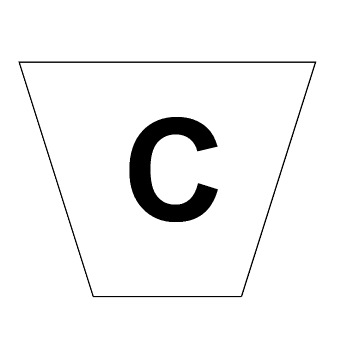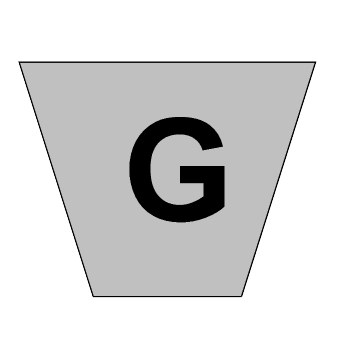SHAWN’S BUCKET SYSTEM
When I was teaching myself about music theory, it always seemed disjointed and confusing. No textbooks I read clearly showed me how chords, scales and arpeggios worked together. They were spending so much time showing me every individual branch of every tree that I never understood that they were all part of the same forest.
This little system of mine works like a charm to demystify quite a bit of theory while also making several important theoretical connections.
Now if you have read up to this point you understand that there are only 12 different notes in music. We can apply any formula (scale shape, chord shape, etc.) to any one of the 12 notes.
Imagine a row of 12 buckets.
Now let’s pretend that each bucket represents one of the 12 Major scales. Each bucket contains an infinite supply of notes from it’s Major scale.
This C Major bucket contains an infinite amount of notes only from the C Major scale ( C D E F G A B C).
A G Major bucket contains an infinite amount of notes only from the G Major scale ( G A B C D E F# G).
NEARLY EVERY SONG USES ONE BUCKET TO CREATE IT’S SCALES, CHORDS AND ARPEGGIOS!!!*
The bucket that we choose for a song is often called the KEY or Key Signature.
Let’s say we want to write a song. The first thing we have to decide is which of the 12 buckets we want to use. Let’s assume we chose C.
You can reach into the bucket and pull out any note in any order to make a melody. (Remember that there is an infinite amount of C Major notes in the C Major bucket).This melody may be your vocal line, guitar solo or whatever.
I can reach into the same bucket and pull handfulls of notes at a time. This produces chords.
Q:Will your melody line work with my chords?
A: Of course! We are drawing from the same source or collective of notes.
We should stop for a moment, let this sink in and learn a new vocabulary word: diatonic.
Diatonic means coming from the same source. The chords and melody we produced came from the same bucket/source so they have to work together. If for some reason I add an errant note to the mix(Example= I add a G# note to a chord), the chord is no longer diatonic because I have added a new element that contradicts the notes you are playing.
If the melody and chords stay true to the original bucket/source, we are staying diatonic.
This is a very “safe” way to play-meaning that if you stay within the bucket you won’t hit any ugly notes.
*Because it is so commonly heard, some styles of music (namely Jazz and Classical) might dip into several different buckets over the course of one song. The trick is to have the melody and chords switch buckets at the same time.
We’ll refer back to this concept often so please make sure you understand it before moving on.


